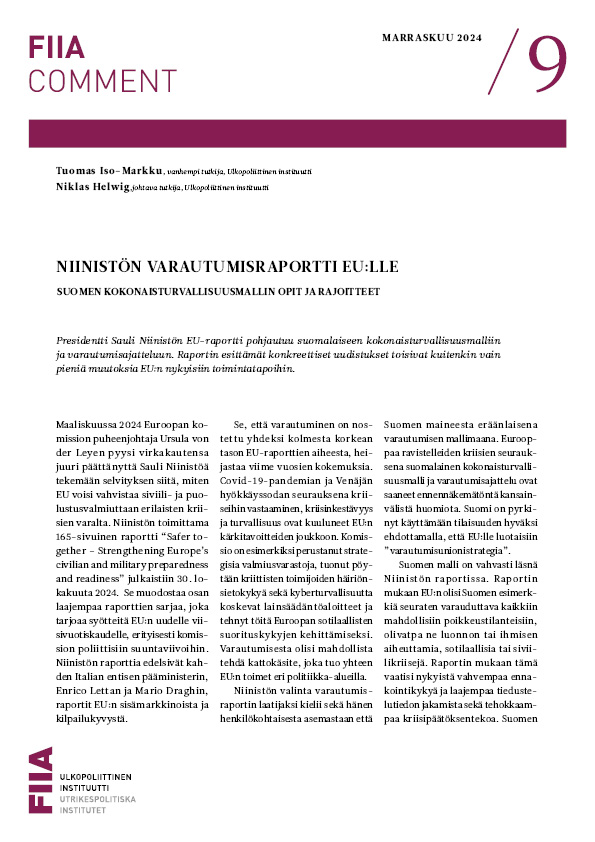The strength of ISIL (Da’ish) has been assured by its adversaries’ weakness. The movement can also bank on support from several regional players, who have now, paradoxically, joined the anti-ISIL coalition. Any effective strategy to defeat the jihadis must be based on a shared goal and sequenced to ensure long-term success.
The plethora of militant Sunni organisations present on scorched Iraqi and Syrian soil largely share a similar agenda: the setting up of a pan-Islamic, sharia-based political entity. What differentiates Da’ish (the Arabic acronym for ‘Islamic State in Iraq and the Levant’, ISIL), however, is the transnational character of the organisation, their systematic attack against soft targets (usually vulnerable minorities) and their ideological boldness and megalomania, aiming even at this stage for the highest possible goal in Islamic statehood, a caliphate.
Abu Bakr al-Baghdadi’s June 2014 self-declaration to assume the title of caliph Ibrahim essentially represents a rallying call to all Sunni Muslims to join the fight against the regimes in Baghdad and Damascus, both regarded as Shiite apostates.
Yet territorial expansion, based on the Islamic frame of reference, is not a regional novelty. Historically, ISIL strongly resembles a re-enactment of the jihad that laid the foundations for the modern Saudi kingdom, and enshrined a fiercely anti-modern, fundamentalist Islamic ideology. The movement, therefore, cannot be regarded as an anomaly, but rather as a symbol of the continuation of visceral hatred of ‘the other’, particularly so-called ‘non-believers’.
Yet, to understand the pace of the recent expansion into the area now under ISIL control, it is necessary to appreciate the fertile ground, prepared through a mix of foreign military interference and regime intransigence with political opposition and the unmaking of the Baathist ideology, first in Iraq, and currently in Syria. In that sense, the movement is mainly filling a territorial and ideological void, even though it also proposes, or rather imposes, an idiosyncratic and literalist re-reading of the Islamic past.
The Iraqi state has been torn apart by three consecutive Gulf wars, a tough UN sanctions regime and, ultimately, de-baathification – including the dismantling of the Iraqi armed forces under the US civil administrator Paul Bremer. Since 2003, the increasing dominance of the Shiite majority, eventually acceding to political power, created not only emotional Sunni resentment but effective marginalisation. Furthermore, Riyadh’s disappointment about the ‘loss of Iraq’ to quite overt Iranian influence, opened avenues for proxy interference, albeit via hard-core Islamist militancy.
Syria has been plagued by several years of severe drought in the north-eastern bread basket, the escalation of the civil war into an existential threat to the regime, and a set of international sanctions creating economic hardship. Early on in the conflict, the military strategy therefore was to retreat from non-vital areas of the sparsely populated Jazira region along the Euphrates valley. Furthermore, the propensity of the Alavite-dominated regime in Damascus to employ large-scale violence transformed the insurgency into an armed rebellion and helped Bashar al-Asad’s ‘fight-against-terrorism’ trope to morph into a self-fulfilling prophecy.
The inter-linkage between these ingredients explains to a large extent the lack of local resilience against ISIL in the Sunni-majority areas that have fallen under its sway. Due to failed state structures, perceived or real grievances and a letting down of the moderate, non-Islamist opposition by reluctant Western supporters, ISIL has either been able to impose its firebrand ideology or to be accepted as the lesser evil compared to the central governments.
Combined with the poor democratic outcome of the tentative Arab revolutions, the appeal of extreme solutions, including millenaristic and utopian ones such as the caliphate, has gained new traction. Even though the quasi-republican path of the Muslim Brotherhood does not represent an acceptable alternative to ISIL ideology, its unsettling by the military in Egypt has provided an additional argument that regime change can only be achieved through violent means. And, quite paradoxically, Tunisia, despite the sustaining success of its democratic experiment, has managed to ‘export’ at least 2,400 jihadis to the various Middle Eastern battlefields.
The territorial appropriation of ISIL in Northern Mesopotamia has transformed the quality of the jihadi movements in Arab lands. It corresponds to the recapture of territories formerly under the authority of Baathist, staunchly secular regimes. Absorbing and transforming Sunni disenchantment and the serial failure of Arab ideological projects, it could boldly, and violently, gain ground. The movement might also manifest a certain degree of leadership, cohesion and military capabilities. But ultimately, it has gained momentum based on its opponents’ combined weaknesses.
An anti-ISIL strategy must disregard its transnational presence and consider the differing Iraqi and Syrian environments. This would enable a properly sequenced approach, attempting to solve the Iraqi conundrum first, before heading for the longer-term project in Syria. The new government in Iraq needs to be pressed hard to reconcile with Sunni leaders in order to regain the confidence of those tribes currently tilting towards ISIL. In Syria, meanwhile, efforts for a negotiated settlement of the conflict should be reactivated without further delay.
At the regional level, three questions need to be addressed in order to create an ironclad, unified anti-ISIL coalition. Firstly, the ambiguous stance of Saudi Arabia, the Wahhabi incubator of the movement’s ideology. Secondly, the question of including Iran, an essential player in both Iraq and Syria, which is also deeply concerned by the spread of Sunni jihadism. And thirdly, Turkey’s role, which is by and large determined by restraint.









